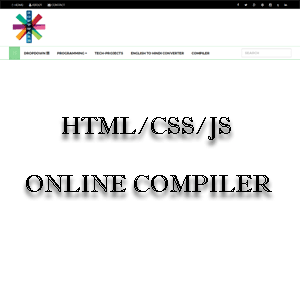Implementing JWT Token for secure authentication
Implementing JWT (JSON Web Token) in Java typically involves creating a secure authentication
mechanism for your web applications. Below is a basic guide to implement JWT using Java, Spring MVC, and jjwt (a popular Java JWT library).
WorkFlow:
The lifecycle of a JSON Web Token (JWT) typically involves several stages, from creation to expiration and validation. JWTs are widely used for securely transmitting information between parties in the form of a signed and optionally encrypted token. Here’s an overview of the typical lifecycle:
Token Creation
Authentication: When a user logs in, they typically provide credentials (e.g., username and password).
Server Validation: The server validates these credentials (e.g., checks the database for the user’s password).
JWT Creation: If the credentials are correct, the server generates a JWT. The token contains:
Header: Describes the signing algorithm (e.g., HS256, RS256) and token type (JWT).
Payload: Contains the claims. Claims are pieces of information (e.g., user ID, expiration time) that are encoded in the token.
Signature: The header and payload are signed with a secret key (HMAC) or a private key (RSA or ECDSA) to ensure integrity.
Authentication: When a user logs in, they typically provide credentials (e.g., username and password).
Server Validation: The server validates these credentials (e.g., checks the database for the user’s password).
JWT Creation: If the credentials are correct, the server generates a JWT. The token contains:
Header: Describes the signing algorithm (e.g., HS256, RS256) and token type (JWT).
Payload: Contains the claims. Claims are pieces of information (e.g., user ID, expiration time) that are encoded in the token.
Signature: The header and payload are signed with a secret key (HMAC) or a private key (RSA or ECDSA) to ensure integrity.
Download Jar file: jjwt-api-0.10.5.jar
To create a A143mk.JWTAPIConfig, we first need to define a package that will be handled in the configuration.
Create classes name in the A143mk.JWTAPIConfig package.
- JwtRequestFilter
- JwtUtil
- SecurityConfig
- AuthRequest
1. JwtRequestFilter
2.JwtUtil
3. SecurityConfig
4. AuthRequest/PayloderBeanClass
Create a Controller class create a simple controller name is AuthController an endpoint is accessed.
Steps to Test JWT Token in Postman:
Obtain the JWT Token: First, you need to obtain the JWT token from your authentication endpoint. Typically, this is done by making a POST request to your login endpoint with the correct user credentials (username, password, etc.).
2.JwtUtil
3. SecurityConfig
4. AuthRequest/PayloderBeanClass
Create a Controller class create a simple controller name is AuthController an endpoint is accessed.
Steps to Test JWT Token in Postman:
Obtain the JWT Token: First, you need to obtain the JWT token from your authentication endpoint. Typically, this is done by making a POST request to your login endpoint with the correct user credentials (username, password, etc.).
Example (login request):
- Method: POST
- URL: http://localhost:8080/A143mk/api/authenticate
- Body (JSON):
{
"username": "A143mk@Manoj"
}
eyJhbGciOiJIUzI1NiJ9.eyJzdWIiOiJCQVRBQGRtc0Vjb20iLCJpYXQiOjE3NDc5MDc5MzYsImV4cCI6MTc0NzkxMTUzNn0.1eEK4gwwR3mr2bqcIoYYjxwpcTzUKOCtBMH-GBo6X_4
Subscribe to:
Post Comments
(
Atom
)






JWT Token
ReplyDelete